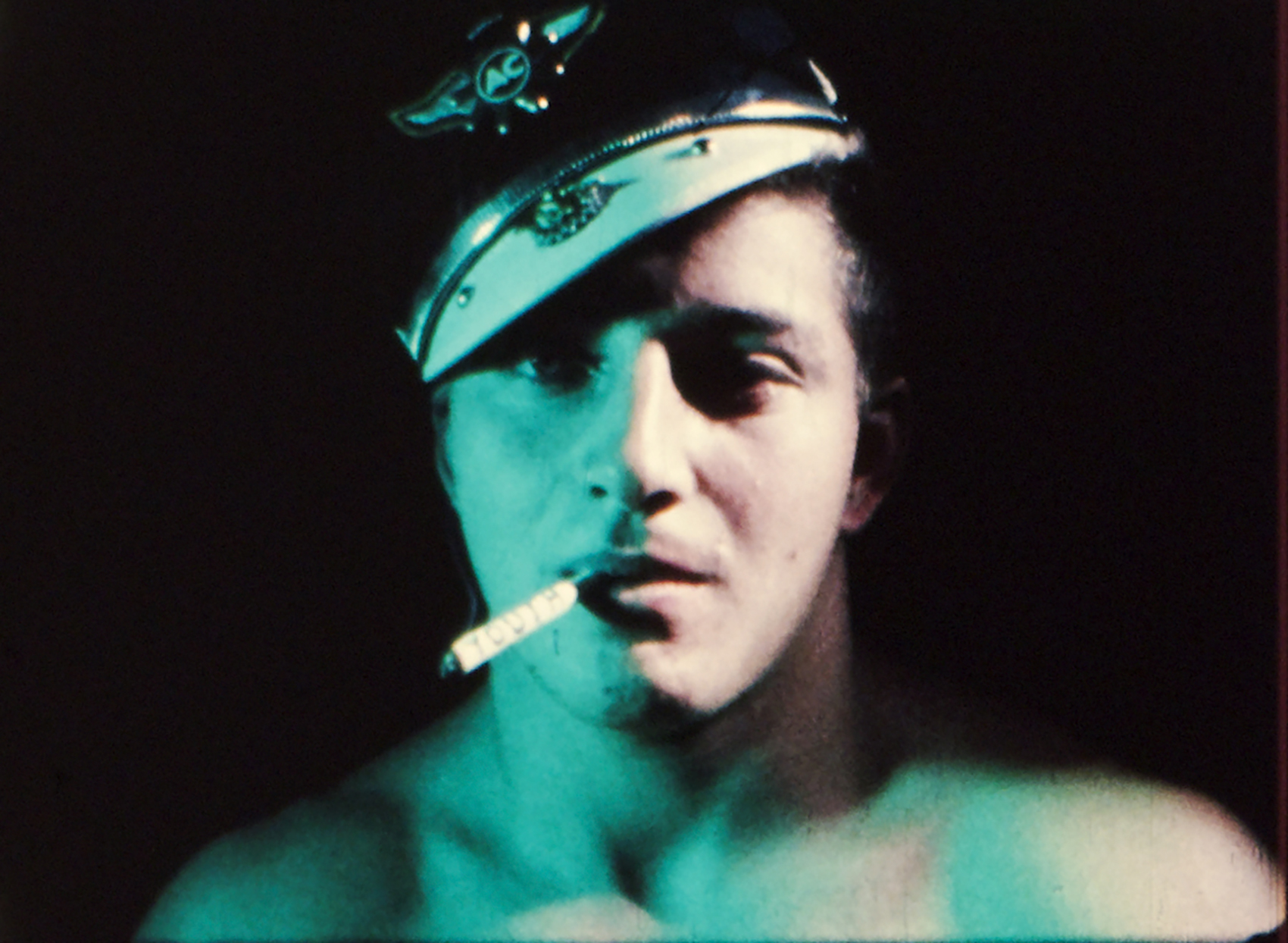On 24 May, it was announced that the groundbreaking queer filmmaker Kenneth Anger had passed away at the age of 96. His infamous movies draw upon transgression, artifice and queerness; and are known for their homoerotic imagery and fascination with the occult. Everything from Kenneth’s lurid visual style to the sly, ironic way that he used pop songs on his soundtracks has had an impact on filmmaking legends; John Waters, Martin Scorsese and David Lynch are all fans.
The legacy of these films is complex; they’re compelling, if politically fraught pieces of art. They linger on fascistic, white supremacist imagery — eagles and iron crosses, leather-bound machismo — but this isn’t a reason to dismiss his work. If anything, it should invite people to observe it even closer. Kenneth’s filmmaking takes these images and interrogates them; idolising and fetishising masculinity, looking for glimmers of queerness in these violent structures. He understands where icons come from and what gives them their power.
His is a cinema of seduction, whether it dwells on the cruising narrative of his earliest films or the power he gives to Lucifer throughout his oeuvre. In honour of his innovative, decades-long body of work, here’s how to get into Kenneth Anger’s movies.
The entry point is… Fireworks (1947)
Fireworks is a dreamlike narrative of cruising, violence and salvation. Full of explicitly homoerotic imagery, the camera is obsessed with the muscles of the sailors that shape it. After his attempt to pick someone up goes awry, a young man (played by Kenneth himself) is set upon by a group of sailors; the violence is brutal, rooted in a perpetual homophobic reality. But as it continues, it becomes something different, almost ritualistic; borderline sexual.
Fireworks feels like a microcosm of Kenneth’s themes: queerness, violence and fantasy. Given everything that unfolds in the film, it’s almost tranquil ending might come as a surprise, but it speaks to something important about Kenneth’s vision of queerness: for all of the danger that surrounds it, there’s still a place for salvation within it.
The one everyone’s seen is… Scorpio Rising (1963)
If you know Kenneth’s films, chances are you associate it with very particular images: leather-clad bikers, the spectre of death and the occult, and motorbikes treated with an erotic, religious reverence. If Fireworks is the blueprint, Scorpio Rising is the art built from it.
Told in four parts, Scorpio Rising focuses on a group of bikers as they fall under the spell of the eponymous Scorpio, a man whose face is inter-spliced with effigies of Jesus and Hitler, and Nazi iconography. This is a film where Kenneth explores both the power of seduction and the seductive nature of power. It becomes more homoerotic as it progresses.
One of the things that makes Scorpio Rising such quintessential Kenneth Anger is the soundtrack. By putting these masculine bikers in contrast with old pop songs like “Blue Velvet”, he frames them as tender objects of desire.
Necessary viewing… Inauguration of the Pleasure Dome (1954)
Inauguration is Kenneth’s longest film, and also the most visually layered and excessive. From the vivid opulence of the colours to the sweeping strings on the score (the original used a full performance of “Glagolitic Mass” by Czech composer Leoš Janáček), it feels like a lush, Hollywood melodrama. The fetishistic gaze of his camera remains as potent as ever, focusing on ritualistic objects and the elaborately made-up faces of figures from mythology including Aphrodite, Lilith and Hecate (the latter played by Kenneth himself). Here, myth takes centre stage, the key to unlocking Kenneth’s cinema as a way into a world beyond our own.
This film takes the director’s thematic concerns and visual language and ramps them up to an extreme. From the complex layering of images on top of each other to the theatricality of the make up and sets, Inauguration sees Kenneth making a Hollywood all of his own.
The under-appreciated gem is… Kustom Kar Kommandos (1965)
It’s safe to say that a film title like Kustom Kar Kommandos will raise some eyebrows. This is one of the things that makes the politics of Kenneth’s films so thorny and complex; the proximity they have to toxic ideology. But it’s this uncertainty that makes the film, and Kenneth as a filmmaker, so interesting: his ability to understand the line between dream and nightmare, fantasy and reality.
At first glance, Kustom feels like a riff on some scenes in Scorpio Rising. It focuses on men who tend for their bikes in a way that’s full of romantic yearning to the sounds of “Dream Lover”. But Kustom takes the dark, leather-clad masculinity of Scorpio and does something different with it: here the colours are vivid and bright, like a kind of femme counterpoint. It’s more tender than Scorpio. Kenneth’s relationship with the politics of fascism will always be entwined with his work in one way or another. Here it feels subversive, with the initials of the film’s title used as a springboard for something else, even if violence lingers just beneath the surface.
The deep cut is… Rabbit’s Moon (1971, 1979)
First filmed in 1950, but not released for decades, Rabbit’s Moon feels worlds away from so much of what’s associated with Kenneth’s films. Gone is the denim-and-leather homoeroticism, the sports cars and, yes, the fascistic imagery. Instead, Rabbit’s Moon is indebted to the clown of commedia dell-arte, as he attempts to jump up and catch the moon, in which a rabbit lives.
With its physical comedy, blue tinted frame and theatrical roots, Rabbit’s Moon feels like the silent cinema of George Méliès. And as much as it might feel like an outlier in Kenneth’s filmography, it carries with it a sense of something magical, full of possibility to show us worlds of fantasy, darkness and dreams.
